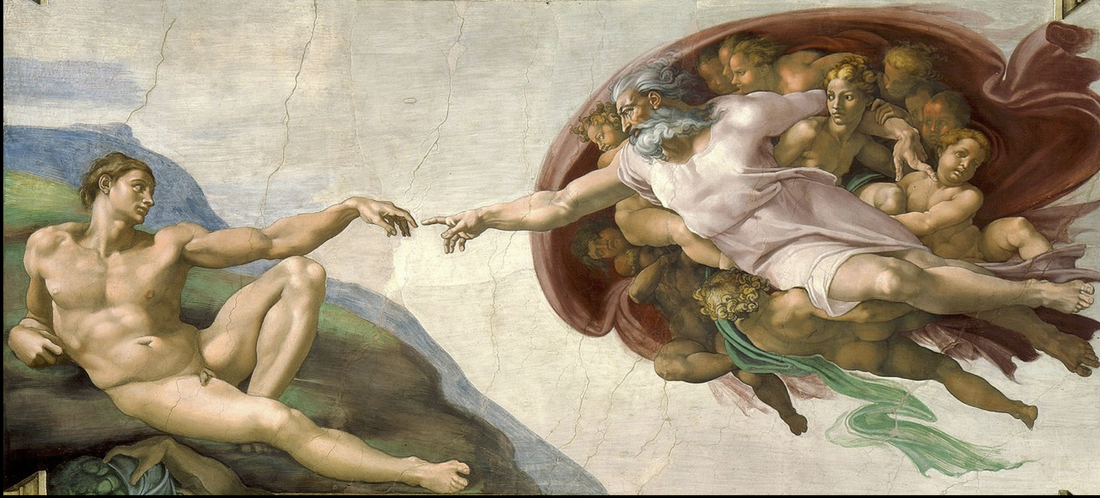|
The image you see above comes from Giotto's Life of Saint Mary Magdalene fresco cycle at the Basilica of Saint Francis in Assisi. Most of the fresco cycle can be found online here. It depcits the arrival of Lazarus, Mary Magdalene, and Martha (the three siblings in the middle of the boat ) with two of their companions: Sidonius (the young man who in) and Maximus (the old man).
The painting also references one of the miracle tales found in Jacobus da Voragine's Golden Legend- more on that later!
0 Comments
The image at top is by Fay Barratt, who has spent decades trying to excavate the "lost women" of the Jesus movement through both study and by "bringing forth" the images within her. The list of women who followed Jesus is long, and few of them are commonly known names. Many of them do not even have names, only encountersHow desperately we need images to replace the missing pieces. Consider this an invitation, perhaps even a mandate: do what you can to give Mary Salome and Mary Jacobe, the mother of the sons of Zebeddee, Johanna, Mary Cleophas , the woman at the well, the Samaritan woman, the poor widow and Peter's mother-in-law faces.
“Let Us make humans in Our image” (Genesis 1:26)
The iconic image by Michelangelo of God creating Adam is known to every schoolchild. But have you ever noticed that underneath God's arm is a feminine figure? Does God have a gender? Is God both masculine and feminine? Many early Christians thought so, conceiving of the Divine as the Pleroma, a word that means "the Fullness", and is beyond gender. So much emphasis has been placed in the Christian tradition on God the Father. What was lost as texts were translated from Hebrew is that the Holy Spirit is a SHE. Every time Yeshua speaks of "Holy Spirit" in the New Testament, know that he used the pronoun she. Notice what happens inside of you if when you read these passages, or say the Nicene Creed, you make this simple change as well. For some people it is a visceral and powerful experience that goes straight to the core of wanting to be seen and included. The Trinity becomes not an all-male committee ( Father, Son and Holy Ghost) but a family of Father, Child and Holy Mother Spirit. Neil Douglas Klotz's revolutionary work has revealed that in Aramaic, Abwoun, the word translated as "Our Father" in the Lord's Prayer, is more accurately translated as "Parent", "Mother-Father", "Thou" or even "Birther". What happens inside of you if you shift your own words of this prayer to reflect the more accurate translations? I invite you to gaze at Michelangelo's painting again. If you are like most people, you never noticed that there was a woman in the painting of the Sistine Chapel before. As we read the texts cherished by early Christians in the early centuries, we will be discovering in this course that there may be many female figures we've never noticed before. We will also encounter other women we may have thought we knew, but we will find them in surprising places or with qualities we've never had the eyes to appreciate before. Sometimes the feminine (particularly Mary Magdalene) has been deliberately cut out, erased, or altered in the story. Sometimes, however, the feminine is hiding in plain sight. As we read through the Synoptic Gospels in the coming month, I invite you to keep a running list of all the women you have never heard of or never noticed before. Where are they? What is the quality of their relationship with Jesus? How does he interact with them? Treat the texts like an Easter egg hunt in which you will be searching for the feminine. You may discover that there are treasures waiting for you to discover. That is certainly the spirit that is present in this very accessible documentary by historians Helen Bond and Joan Taylor. Together, these well-regarded professors travel from Israel to Rome to search for missing pieces of early Christianity. I encourage you to watch it as you read through the New Testament and see if it offers another lens of perception. Among the catalogue of the most popular Early Christian symbols are the anchor, the fish, the "Seed of Life" (six petalled flower), the dove and the peacock and Greek letters (Alpha and Omega) which signified the fullness of all thing. As art historians frequently observe, the crucifix with a tortured body only become the dominant symbol of Christianity after the year 1000.
I invite you to inscribe your art journal with each of these images and see what messages they may wish to offer to you. Do they connect you with different aspects of inner knowing or faith? Each Chapel meeting, we will explore the practice of Visio Divina, using an image as a doorway to listen to the still small voice within. For our first session, we turned to Holy Union by Mary Jane Miller, a Christian living in Mexico who teaches iconography classes.
In this process, we move from the literal to the symbolic to the mystic. 1)Literal As you gaze at the image above, let your fingers trace the figure.What do you notice? Notice how the hands are crossed, how Christ's open book has the Alpha and Omega, but Mary's scroll is blank. Notice the colors, the shapes, the composition. See how many details you can observe. In your journal, list these under "I see..." 2) Symbolic What does this image symbolize for you about who Jesus and Mary are? 3) Mystical Imagine that this image is one way the Divine reaches out to communicate to you. Begin writing with the prompt, "What we want you to know is...." If you are moved to share, please post what you saw, felt, received. |
Archives
June 2024
Categories |







 RSS Feed
RSS Feed